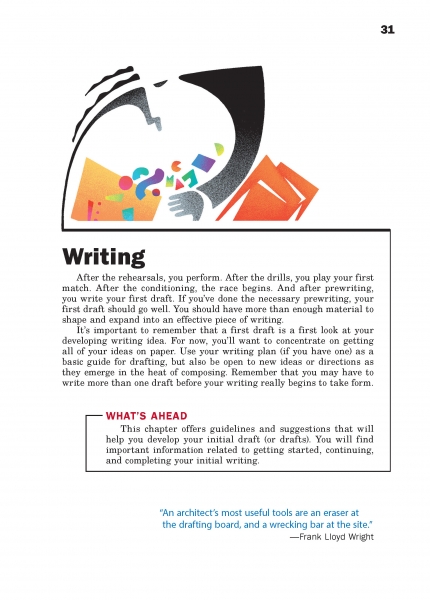Page 031 from

Start-Up Activity
You probably have some talkative students. Challenge a volunteer to talk nonstop for a full minute about a subject of his or her choosing. The person may say any school-appropriate thing but must keep talking.
After your volunteer crosses the one-minute mark, applaud the nonstop chattiness. Then tell your class this is what you want them to do when they write a first draft of anything. You want them just to rapidly pour out their ideas on the topic. If they've done their prewriting work, they will have plenty to say. The key is to say it fluently and rapidly. A first draft doesn't have to be perfect: It just has to be.
This chapter gives your students help with writing openings, middles, and closings. Students should use whatever strategies work but should not obsess about using any given approach. Instead, they should get their ideas down. Afterward, they can work on improving them.
Think About It
“It's amazing, if you know what you want to say, how fast it is to write.”
—Evan Davis

Start-Up Activity
You probably have some talkative students. Challenge a volunteer to talk nonstop for a full minute about a subject of his or her choosing. The person may say any school-appropriate thing but must keep talking.
After your volunteer crosses the one-minute mark, applaud the nonstop chattiness. Then tell your class this is what you want them to do when they write a first draft of anything. You want them just to rapidly pour out their ideas on the topic. If they've done their prewriting work, they will have plenty to say. The key is to say it fluently and rapidly. A first draft doesn't have to be perfect: It just has to be.
This chapter gives your students help with writing openings, middles, and closings. Students should use whatever strategies work but should not obsess about using any given approach. Instead, they should get their ideas down. Afterward, they can work on improving them.
Think About It
“It's amazing, if you know what you want to say, how fast it is to write.”
—Evan Davis
